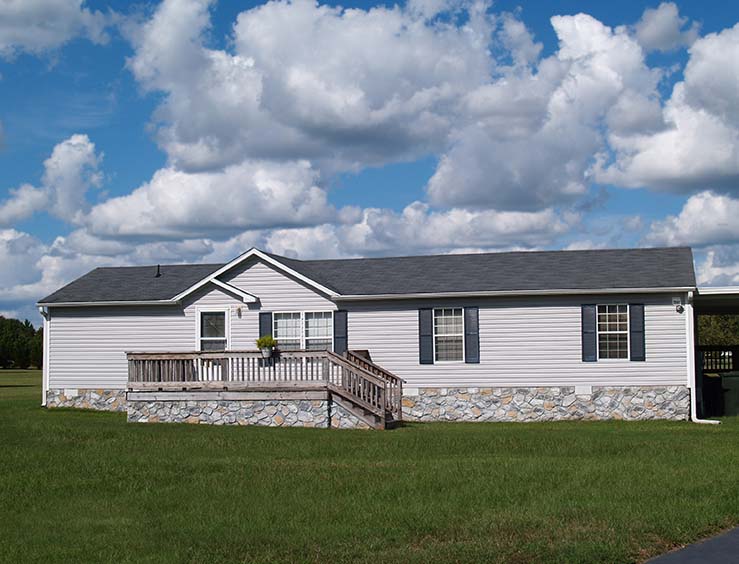

Table of contents
- Manufactured Date: Manufactured Homes Built After June 15, 1976
- Permanent Foundation: Stable & Tied to the Land
- Utility Connections: Water, Sewer, Gas, and Electricity
- Tow Hitches and Axles Removal: The Home is There to Stay
- HUD Tag & Data Plate: Essential Identification
- De-titling as Real Property: Removing the Personal Property Designation
- Original Location: No Prior Moves
- Conclusion: Knowing Manufactured Home Loan Guidelines
On June 15, 1976, the US Department of Housing and Urban Development created the Manufactured Home Construction and Safety Standards. These standards regulate the construction and design of manufactured homes. The mortgage lending industry uses these standards as a benchmark for manufactured home loans. Like site-built homes, manufactured home loans are available through FHA, VA, USDA, FNMA, and FHLMC. However, manufactured home loans have additional, unique guidelines.
Manufactured Date: Manufactured Homes Built After June 15, 1976
To be eligible for a home loan, manufactured homes must conform to HUD standards. HUD established their standards on June 15, 1976. June 15, 1976 is, therefore, the oldest manufactured date a home can have to be eligible for a loan. USDA guaranteed loans are an exception to this rule. A home older than 12 months from the date of the purchase agreement is ineligible for USDA financing.
Permanent Foundation: Stable & Tied to the Land
Mortgage lenders are in the real estate business. On the day of their construction in a factory, manufactured homes are classified as personal property. The home must be reclassified as real estate to be eligible for a mortgage. Its not enough to have a manufactured home transported to a location, dropped off, and call it a day. A permanent foundation must tie the home to the land. HUD has an in-depth guide to what constitutes a permanent foundation. To ensure the home is on a permanent foundation, lenders will require an inspection by a foundation engineer.
In addition to being a means of tying the home to the land, permanent foundations provide the necessary structural stability for lenders to consider the home a sound investment.
Utility Connections: Water, Sewer, Gas, and Electricity
Part of HUD’s standards is to make sure manufactured homes comply with building codes and regulations. The home must be safe and habitable. Manufactured homes must have connections to electrical utilities, a water supply, a sewer or septic system, and a gas utility (if applicable) to be eligible for a home loan.
Tow Hitches and Axles Removal: The Home is There to Stay
Manufactured homes are transported from a factory with tow hitches and axles installed to the steel frame of the home. While these are good for transportation purposes, they aren’t needed if the home is to be classified as real estate. Lenders want homes that they lend on to stay in one place. Removing the tow hitches and axles from the property gives lenders confidence that the home will remain stationary after lending money for the property.
HUD Tag & Data Plate: Essential Identification
Manufactured homes must have a HUD tag and data plate to be eligible for mortgage financing. The HUD tag, also known as a certification label, is a small metal plate located on each transportable section of the home’s exterior that displays a unique serial number. The data plate, found inside the home, contains vital information such as the manufactured date, make and model, and other HUD standard compliance information. Lenders use these identifiers to confirm the home’s eligibility.
De-titling as Real Property: Removing the Personal Property Designation
Manufactured homes, like automobiles, have titles. Manufactured home titles don’t tie the home to real estate. They are titles for the home itself, which is classified as personal property. To be eligible for a home loan, manufactured homes must have their titles retired to then tie the home to the land.
Original Location: No Prior Moves
Manufactured homes must be on their original installation site to qualify for a mortgage. Moving a manufactured home from its original location risks structural and other damage. This risk is a risk that the secondary mortgage market (FNMA, GNMA, and FHLMC) is not willing to take.
Conclusion: Knowing Manufactured Home Loan Guidelines
Manufactured home loans follow many of the same guidelines as site-built homes. However, manufactured homes also have additional guidelines. Knowing these guidelines in advance can help homebuyers in the market for a manufactured home prepare for purchasing and getting a loan. If you are interested in buying a manufactured home, contact us, and we’ll guide you through the process with ease.